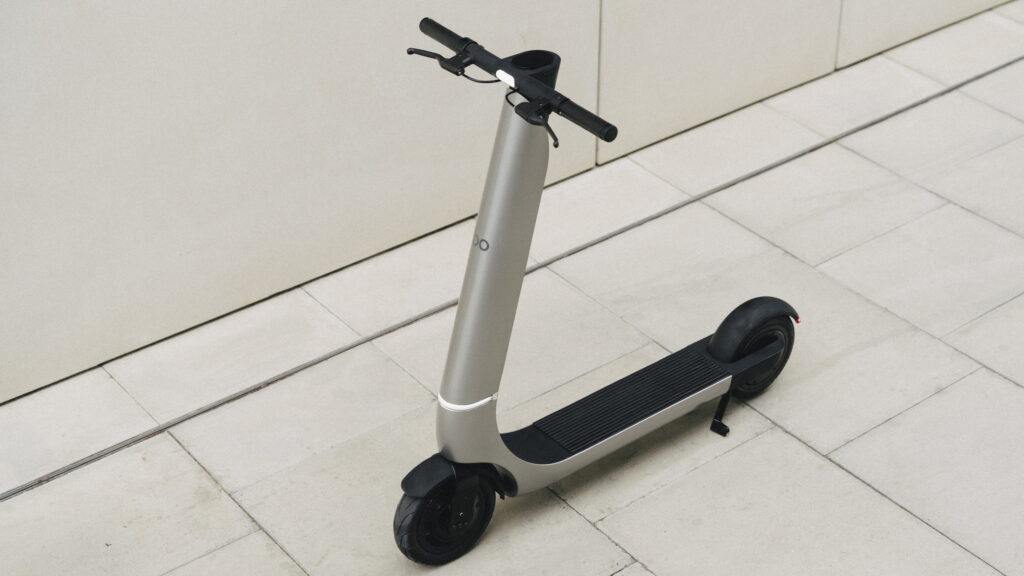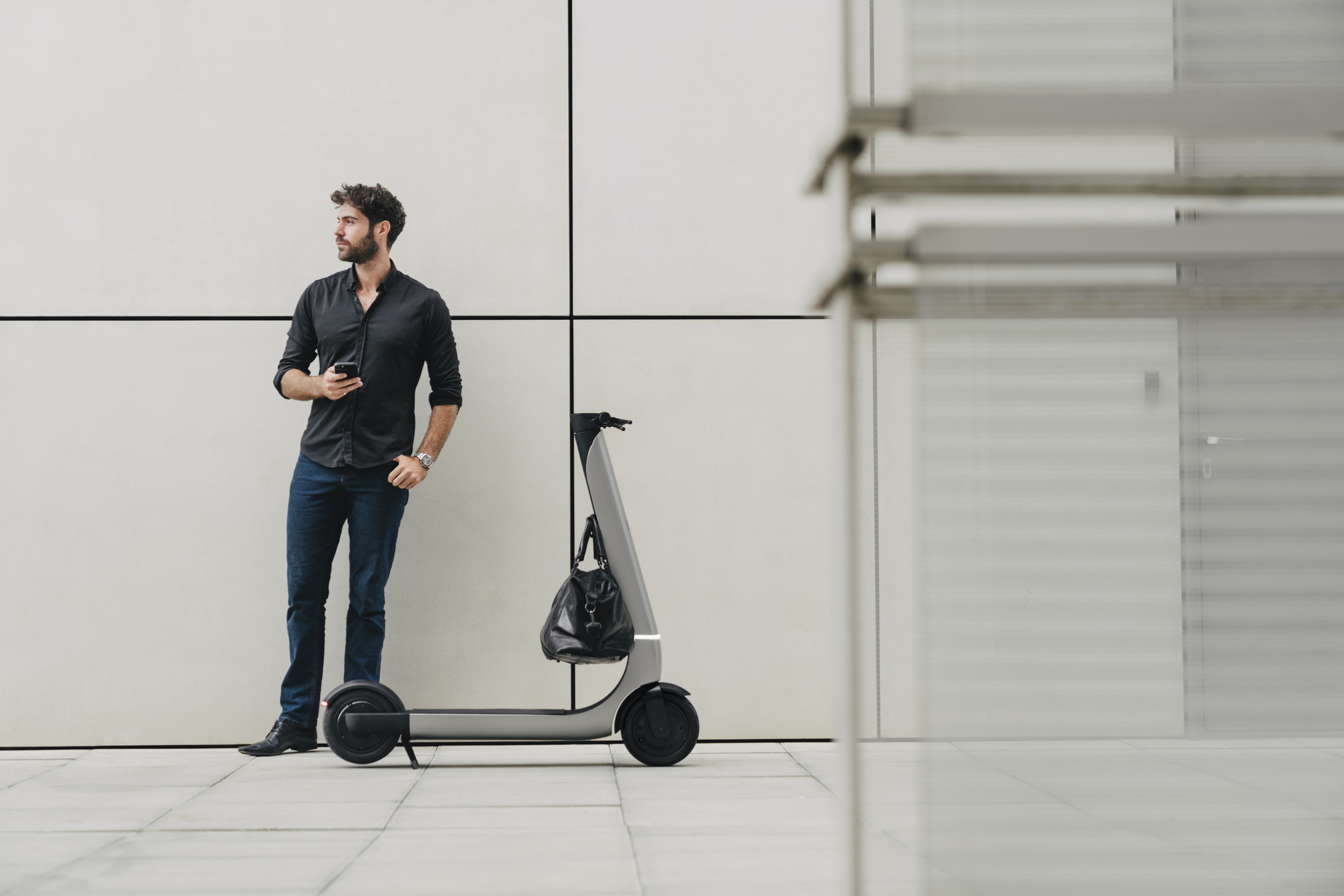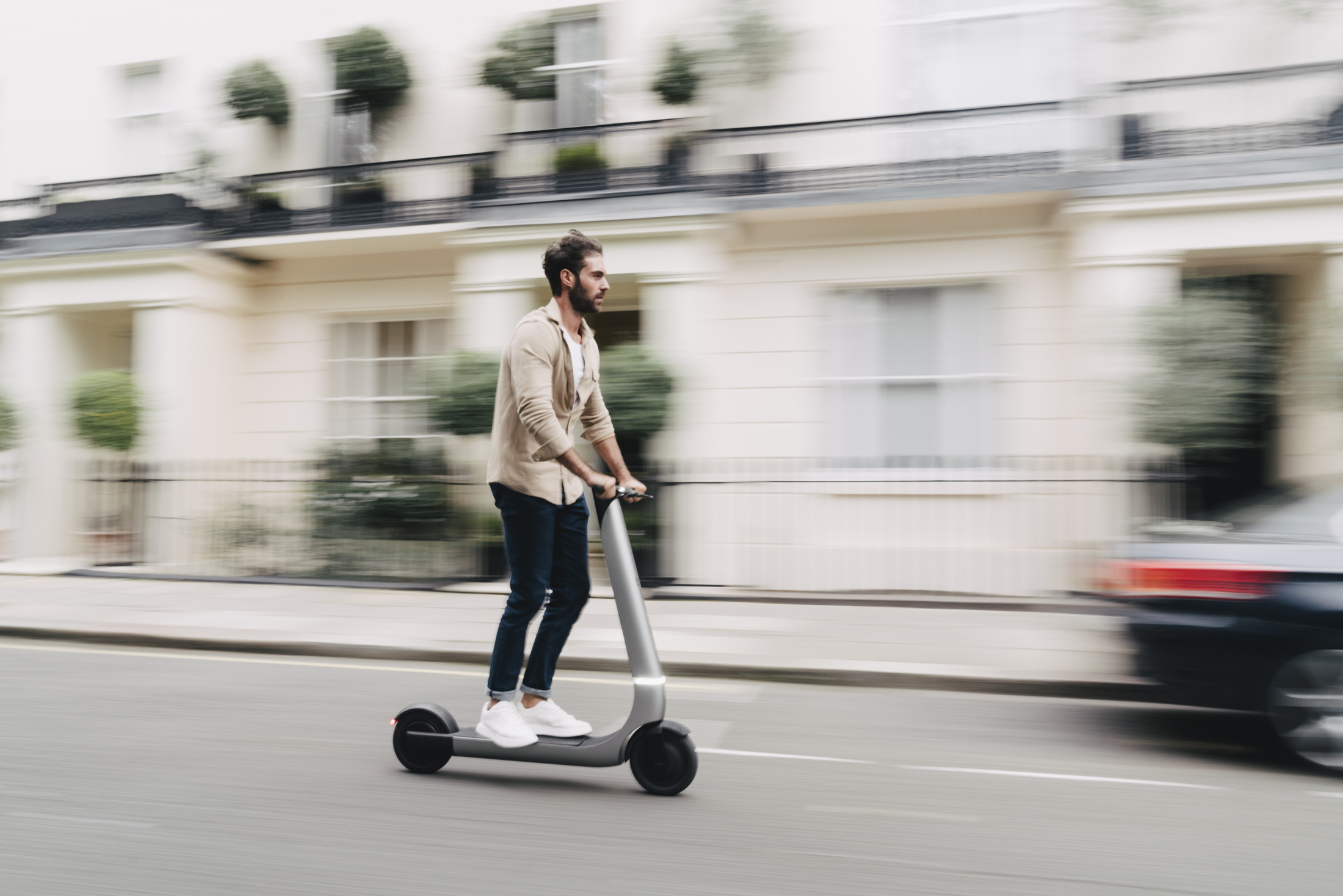The world is awash in e-scooters, and yet, despite the large number of them on the street, they all seem to look the same. Bo has taken the challenge of changing the game with its innovative, carefully designed e-scooter, the M.
How much can you possibly innovate such a simple device? Well, Bo was founded by two engineers who previously worked at Williams F1 Advanced Engineering, as well as a designer who formerly worked at JLR. So they did their best to really tackle that question.
Ingeniously, the first thing they did was simplify the parts that riders interact with. Rather than building the scooter out of a base, a long steering column, and handlebars, the team combined the base and the vertical section into a single chassis element.
They call this the Monocurve design, and it has a few advantages. Made out of forged aluminum, it’s a strong, unibody construction provides a more ergonomic design. It also gives riders a sturdy, immobile vertical section, to which they can attach bags weighing up to 22 lbs (10 kg).
Read: BMW Shows Off Electric Tricycle And FWD Scooter As Urban Transportation Solutions
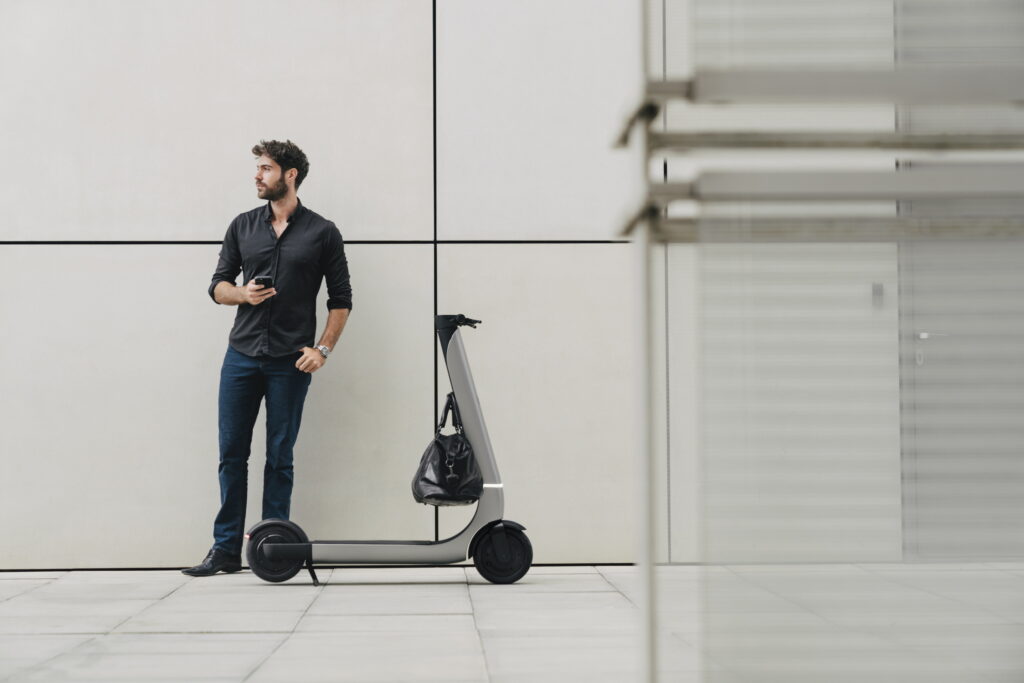
“Our rider research discovered the majority of people seldom or never fold their e-scooters,” said Harris Wills, Bo co-founder and CTO. “So we made a conscious decision to introduce the Bo M with an unbroken Monocurve unibody chassis and eliminate this source of weakness.”
Since the steering column is now inside the Monocurve chassis, it means that the weight of the bag doesn’t affect steering performance and throw riders off their course. That decision also allowed the company to pack more technology into the M, like the Safetsteer system.
Hidden inside the chassis, the system uses a pair of bespoke, wound torsion springs that help re-center the steering after a turn. Bo says that this system helps make steering more intuitive for novice riders, and less wild over bumps, leading to a more confident ride, regardless of the owner’s experience level.
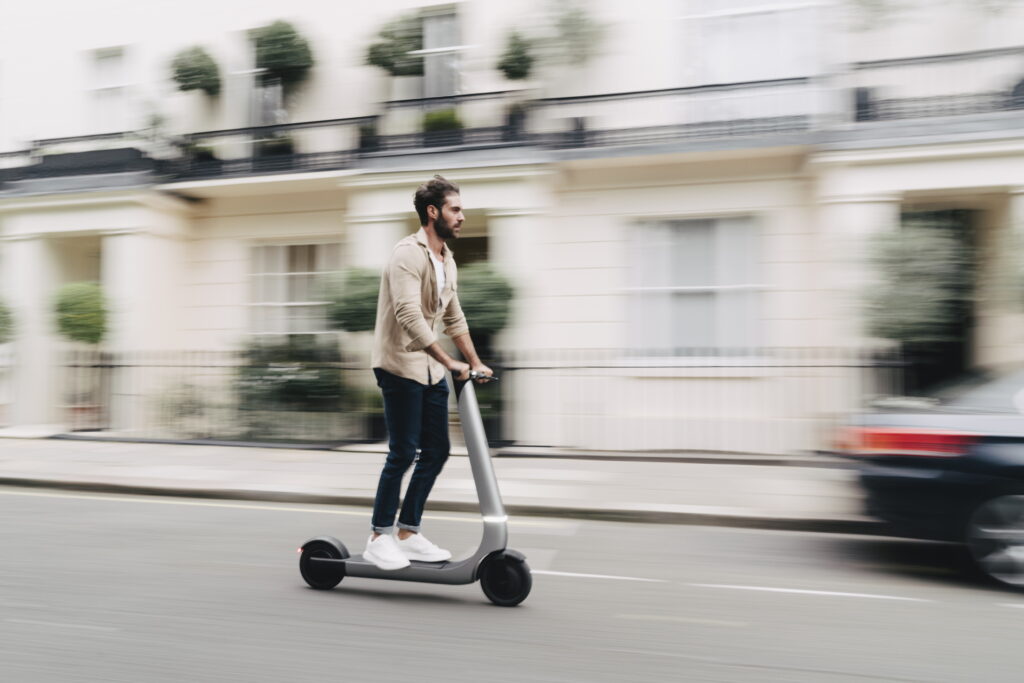
To help keep riders comfortable, the base of the chassis features an “Airdeck” to stand on. The elastomer foot pad is made out of the same anti-vibration foam as high-end sneakers, which soaks up the bumps without the need for a suspension, which Bo claims doesn’t work very well on a scooter.
Finally, the large Monocurve chassis means that the manufacturer is able to hide more batteries within the M. That means that the scooter has a range of up to 31 miles (50 km) and a top speed of up to 21 mph (35 km/h). Based in hilly Bristol, Bo also tuned the motor to ensure that it could handle steep inclines without difficulty.
To help get it as far as possible, the rear brake is entirely regenerative, while the front brake is a drum. That gives riders free rein to slow as efficiently or as quickly as possible, depending on the situation they find themselves in.
Tipping the scales at 49 lbs (22 kg), the M can handle riders that weigh up to 220 lbs (100 kg). Now that production has begun, Bo says that the scooter will cost riders £2,249 ($2,726 USD at current exchange rates). The first deliveries from pre-orders are set to start arriving in November.




